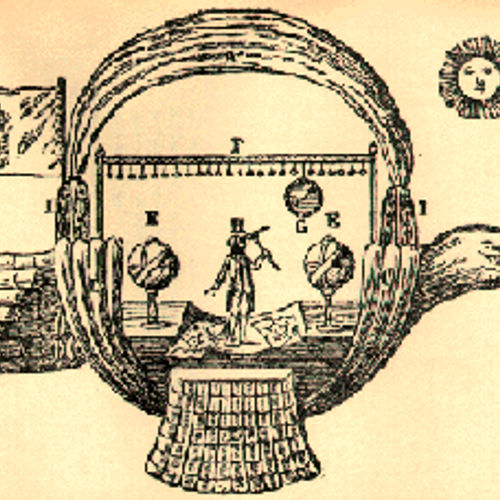
| Added | Tue, 14/09/2021 |
| Источники | |
| Версии |
The first human flight on a kite was documented in the kingdom of Northern Wei in 559, and the official history of aircraft construction begins on June 5, 1783, when the first balloon of the Montgolfier brothers took off. However, there is at least one more noteworthy case between these events: on August 8, 1709, in Lisbon, a Luso-Brazilian priest demonstrated to King John V of Portugal and his court the world's first balloon model, which rose to a height of about 11 feet (3.3 m).
Bartolomeu de Gusman, born Bartolomeu Lorenzo de Gusman (1685-1724, Toledo, Spain), was a priest and naturalist born in the then Portuguese colony of Brazil and known for his early work on the design of airships that were lighter than air.
Gusman began his novitiate in the Society of Jesus in Bahia when he was about fifteen years old, but left the order in 1701. He went to Portugal and found a patron in Lisbon in the person of the Marquis d'abrantis. Guzman soon graduated from the University of Coimbra, where he focused on philology and mathematics, but received the title of doctor in canonical (related to theology) law. It was said that he had a remarkable memory and knew several languages.
One day, Guzhman noticed a soap bubble rising in a stream of hot air around a candle flame, which made him think about the difference between air densities at different temperatures. In 1709, he announced that he would soon show everyone a "flying car". On April 19 of the same year, he received official permission from King John V to demonstrate his invention in front of the Royal House.
The content of this document has reached our times, as well as the image and description of the airship invented by Guzhman. Developing the ideas of Francesco Lana de Terzi, Gusman wanted to cover a boat-like vessel with a huge sail similar to the cover of a transport van. The design of the boat had to contain tubes designed to supply air to the sail. The vessel was to be propelled by magnets placed in two hollow metal balls.
The public tests of the mechanism invented by Guzhman, scheduled for June 24, 1709, did not take place. The first demonstration was held on August 3, 1709, when he attempted to fly into the Reception Hall of the royal palace. However, a small balloon made of paper caught fire before it could rise into the air. Two days later, the second attempt was successful: to the surprise of all those gathered, the device rose into the air by about 20 palms. Fearing a fire, palace servants knocked down the device before it reached the ceiling.
Three days later, on August 8, 1709, a new test was conducted in the presence of a large number of notable persons. This time Guzhman achieved complete success: his balloon slowly took off, and then, when the flame went out, began to fall. The invention, which had the shape of a bird pierced with many pipes, was called Passarola.
The king rewarded the inventor by appointing him a professor at the University of Coimbra and making him a canon. He also became one of the fifty elected members of the Royal Historical Academy (port. Academia Real de História), founded in 1720, and in 1722 was appointed chaplain of the royal court. Guzhman was engaged in other inventions, but never stopped working on improving flying ships, which he came up with as a novice in science. His experiments brought him close to creating a real airship in the modern sense – a ship that was supposed to fly due to a triangular pyramid filled with gas. However, by this time the Portuguese Inquisition became interested in him, which forbade him to continue research in the field of aeronautics, which delayed progress in this area for some time.
The development and implementation of the airship by Bartolomeu de Gusman became evidence of the gigantic technical and technological leap he made. Because of this, he is rightly considered the father of balloons, ahead of the Montgolfier brothers by 74 years. His contribution to the development of aviation was appreciated, and in 1936 an airport built by Luftschiffbau Zeppelin and intended to serve the Graf Zeppelin and Hindenburg airships was named after him in Rio de Janeiro. In 1941, this airport was transferred to the Brazilian Air Force and renamed Santa Cruz Air Force Base. Currently, the airport serving the Brazilian municipality of Araraquara is also named after Bartolomeu de Gusmana.
On August 8, 1709, in Lisbon, a Luso-Brazilian priest demonstrated to King John V of Portugal and his court the world's first balloon model, which rose to a height of about 11 feet (3.3 m). This happened 74 years before the beginning of the official history of aircraft construction (on June 5, 1783, the first balloon of the Montgolfier brothers took off).
A fancy flying ship proposed by the Brazilian Jesuit Bartolomeu de Gusman (1685-1724)
This is a fanciful flying ship proposed by the Brazilian Jesuit Bartolomeu de Gusmão (1685–1724). Gusmão is said to have flown a small balloon before the Portuguese court in Lisbon’s Casa da India on August 8, 1709. Etching from a publication, English, 18th century
Log in or register to post comments

